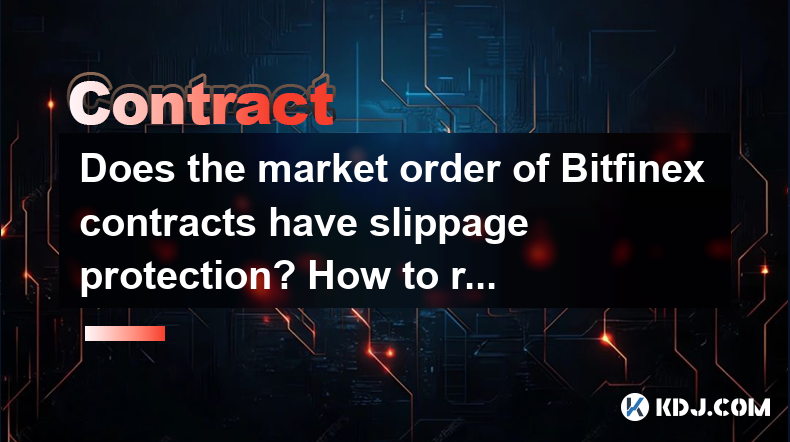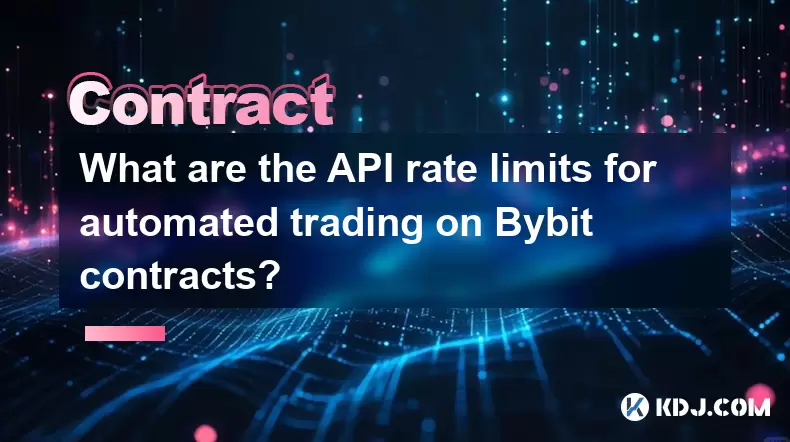-
 Bitcoin
Bitcoin $117500
2.15% -
 Ethereum
Ethereum $3911
6.19% -
 XRP
XRP $3.316
10.79% -
 Tether USDt
Tether USDt $1.000
0.01% -
 BNB
BNB $787.2
2.24% -
 Solana
Solana $175.2
4.15% -
 USDC
USDC $0.9999
0.00% -
 Dogecoin
Dogecoin $0.2225
8.40% -
 TRON
TRON $0.3383
0.28% -
 Cardano
Cardano $0.7868
6.02% -
 Stellar
Stellar $0.4382
9.34% -
 Hyperliquid
Hyperliquid $40.92
7.56% -
 Sui
Sui $3.764
7.63% -
 Chainlink
Chainlink $18.48
10.66% -
 Bitcoin Cash
Bitcoin Cash $582.1
1.88% -
 Hedera
Hedera $0.2601
6.30% -
 Avalanche
Avalanche $23.33
4.94% -
 Ethena USDe
Ethena USDe $1.001
0.02% -
 Litecoin
Litecoin $122.3
2.04% -
 UNUS SED LEO
UNUS SED LEO $8.969
-0.27% -
 Toncoin
Toncoin $3.339
0.86% -
 Shiba Inu
Shiba Inu $0.00001287
4.30% -
 Uniswap
Uniswap $10.43
7.38% -
 Polkadot
Polkadot $3.861
5.08% -
 Dai
Dai $1.000
0.02% -
 Bitget Token
Bitget Token $4.513
3.41% -
 Monero
Monero $267.7
-6.18% -
 Cronos
Cronos $0.1499
4.14% -
 Pepe
Pepe $0.00001110
5.15% -
 Aave
Aave $284.9
8.28%
Does the market order of Bitfinex contracts have slippage protection? How to reduce slippage when placing large orders?
Bitfinex doesn't offer slippage protection for market orders, but traders can use limit orders, split large orders, and analyze the order book to minimize slippage.
May 05, 2025 at 02:30 pm

Introduction to Bitfinex and Market Orders
Bitfinex is one of the leading cryptocurrency exchanges, known for its advanced trading features and high liquidity. Among its offerings, market orders are a popular choice for traders looking to execute trades quickly. A market order is an order to buy or sell a cryptocurrency at the best available current price. However, one of the challenges traders face with market orders is slippage, which occurs when the price at which the order is executed differs from the expected price.
Understanding Slippage in Market Orders
Slippage is a common phenomenon in trading, especially in volatile markets like cryptocurrencies. It happens when there is a delay between the time a trader places an order and the time it is executed. During this delay, the market price can change, leading to a difference between the expected and actual execution price. On Bitfinex, market orders are particularly susceptible to slippage due to the high volume and rapid price movements.
Does Bitfinex Offer Slippage Protection for Market Orders?
Bitfinex does not offer explicit slippage protection for market orders. The exchange prioritizes speed and liquidity, which means that market orders are executed as quickly as possible at the best available price. While this ensures fast execution, it also means that traders are exposed to the risk of slippage. However, Bitfinex does provide tools and features that can help traders manage and reduce slippage.
Strategies to Reduce Slippage on Bitfinex
To minimize slippage when placing large orders on Bitfinex, traders can employ several strategies. Here are some effective methods:
Using Limit Orders
Limit orders allow traders to specify the price at which they want to buy or sell a cryptocurrency. By setting a limit order, traders can avoid the risk of slippage because the order will only be executed at the specified price or better. Here’s how to place a limit order on Bitfinex:
- Navigate to the trading interface on Bitfinex.
- Select the cryptocurrency pair you want to trade.
- Click on the "Order Form" tab.
- Choose "Limit" as the order type.
- Enter the amount you want to buy or sell.
- Set the price at which you want the order to be executed.
- Click "Buy" or "Sell" to place the order.
Splitting Large Orders
Splitting large orders into smaller ones can help reduce slippage. By breaking down a large order into smaller chunks, traders can minimize the impact on the market price. Here’s how to split a large order on Bitfinex:
- Determine the total amount you want to trade.
- Divide the total amount into smaller, manageable portions.
- Place multiple limit orders at different price levels.
- Monitor the market and adjust the orders as needed.
Using the Order Book
Analyzing the order book can provide valuable insights into the market depth and liquidity. By understanding the order book, traders can place orders that are more likely to be executed with minimal slippage. Here’s how to use the order book on Bitfinex:
- Open the trading interface on Bitfinex.
- Look at the order book on the right side of the screen.
- Identify the levels of buy and sell orders.
- Place your orders at price levels where there is sufficient liquidity to minimize slippage.
Utilizing Stop-Limit Orders
Stop-limit orders combine the features of stop orders and limit orders. They allow traders to set a stop price that triggers a limit order. This can be useful for managing slippage in volatile markets. Here’s how to place a stop-limit order on Bitfinex:
- Go to the trading interface on Bitfinex.
- Select the cryptocurrency pair you want to trade.
- Click on the "Order Form" tab.
- Choose "Stop Limit" as the order type.
- Enter the stop price and the limit price.
- Set the amount you want to buy or sell.
- Click "Buy" or "Sell" to place the order.
Monitoring and Adjusting Orders
Monitoring and adjusting orders is crucial for managing slippage. Traders should keep an eye on their open orders and be ready to adjust them based on market conditions. Here’s how to monitor and adjust orders on Bitfinex:
- Open the trading interface on Bitfinex.
- Go to the "Orders" tab to view your open orders.
- Monitor the market price and the status of your orders.
- If necessary, cancel or modify your orders to adapt to changing market conditions.
Using Advanced Trading Tools
Bitfinex offers advanced trading tools that can help traders manage slippage. One such tool is the TWAP (Time-Weighted Average Price) order, which allows traders to execute large orders over a specified period to minimize market impact. Here’s how to use TWAP orders on Bitfinex:
- Navigate to the trading interface on Bitfinex.
- Select the cryptocurrency pair you want to trade.
- Click on the "Order Form" tab.
- Choose "TWAP" as the order type.
- Enter the total amount you want to trade and the duration over which you want the order to be executed.
- Click "Buy" or "Sell" to place the order.
Frequently Asked Questions
Q: Can I use market orders on Bitfinex without any risk of slippage?
A: No, market orders on Bitfinex are subject to slippage due to the nature of the order type and the volatility of the cryptocurrency market. However, traders can use various strategies and tools to minimize this risk.
Q: Are there any fees associated with using limit orders to reduce slippage on Bitfinex?
A: Bitfinex charges trading fees based on the user's trading volume and account type. The fees for limit orders are the same as those for market orders, so using limit orders to reduce slippage does not incur additional costs.
Q: How can I check the liquidity of a cryptocurrency pair on Bitfinex before placing an order?
A: You can check the liquidity of a cryptocurrency pair on Bitfinex by looking at the order book. The order book displays the current buy and sell orders at different price levels, giving you an idea of the market depth and liquidity.
Q: Is it possible to automate the process of splitting large orders on Bitfinex?
A: While Bitfinex does not offer a built-in feature to automate the splitting of large orders, traders can use external trading bots and algorithms to automate this process. These tools can help manage large orders more efficiently and reduce slippage.
Disclaimer:info@kdj.com
The information provided is not trading advice. kdj.com does not assume any responsibility for any investments made based on the information provided in this article. Cryptocurrencies are highly volatile and it is highly recommended that you invest with caution after thorough research!
If you believe that the content used on this website infringes your copyright, please contact us immediately (info@kdj.com) and we will delete it promptly.
- FTT Token's Wild Ride: Creditor Repayments vs. Market Drop - A New Yorker's Take
- 2025-08-08 07:10:12
- Floki Crypto Price Prediction: Riding the Robinhood Rocket or Just a Meme?
- 2025-08-08 07:15:12
- EigenLayer, Restaking, and Ethereum: Navigating the Hype and the Hazards
- 2025-08-08 06:30:12
- Super Bowl 59: Jon Batiste to Jazz Up the National Anthem
- 2025-08-08 06:30:12
- Cold Wallet Crypto in 2025: The Future is Now, Ya'll
- 2025-08-08 05:10:13
- MAGACOIN, SOL, and ADA: A Tale of Shifting Tides in Crypto
- 2025-08-08 05:10:13
Related knowledge

What is the minimum deposit for OKX contracts?
Aug 08,2025 at 07:00am
Understanding OKX Contract Trading BasicsOKX is one of the leading cryptocurrency derivatives exchanges, offering a wide range of perpetual and future...

Where can I find the OKX trading calculator?
Aug 08,2025 at 07:49am
Understanding the OKX Trading Calculator FunctionalityThe OKX trading calculator is a powerful analytical tool designed to assist traders in estimatin...

Are there any fees for futures settlement on OKX?
Aug 08,2025 at 05:35am
Understanding Futures Settlement on OKXFutures settlement on OKX refers to the process by which open futures contracts are automatically closed or mar...

How to use the OKX margin calculator for futures?
Aug 08,2025 at 05:15am
Understanding the OKX Margin Calculator for FuturesThe OKX margin calculator is a specialized tool designed to assist traders in estimating the requir...

How to find and copy experienced traders on Bybit contracts?
Aug 08,2025 at 06:00am
Understanding Copy Trading on BybitBybit offers a copy trading feature that allows users to automatically replicate the contract positions of experien...

What are the API rate limits for automated trading on Bybit contracts?
Aug 08,2025 at 06:08am
Understanding API Rate Limits on BybitWhen engaging in automated trading on Bybit contracts, understanding the API rate limits is essential to prevent...

What is the minimum deposit for OKX contracts?
Aug 08,2025 at 07:00am
Understanding OKX Contract Trading BasicsOKX is one of the leading cryptocurrency derivatives exchanges, offering a wide range of perpetual and future...

Where can I find the OKX trading calculator?
Aug 08,2025 at 07:49am
Understanding the OKX Trading Calculator FunctionalityThe OKX trading calculator is a powerful analytical tool designed to assist traders in estimatin...

Are there any fees for futures settlement on OKX?
Aug 08,2025 at 05:35am
Understanding Futures Settlement on OKXFutures settlement on OKX refers to the process by which open futures contracts are automatically closed or mar...

How to use the OKX margin calculator for futures?
Aug 08,2025 at 05:15am
Understanding the OKX Margin Calculator for FuturesThe OKX margin calculator is a specialized tool designed to assist traders in estimating the requir...

How to find and copy experienced traders on Bybit contracts?
Aug 08,2025 at 06:00am
Understanding Copy Trading on BybitBybit offers a copy trading feature that allows users to automatically replicate the contract positions of experien...

What are the API rate limits for automated trading on Bybit contracts?
Aug 08,2025 at 06:08am
Understanding API Rate Limits on BybitWhen engaging in automated trading on Bybit contracts, understanding the API rate limits is essential to prevent...
See all articles

























































































